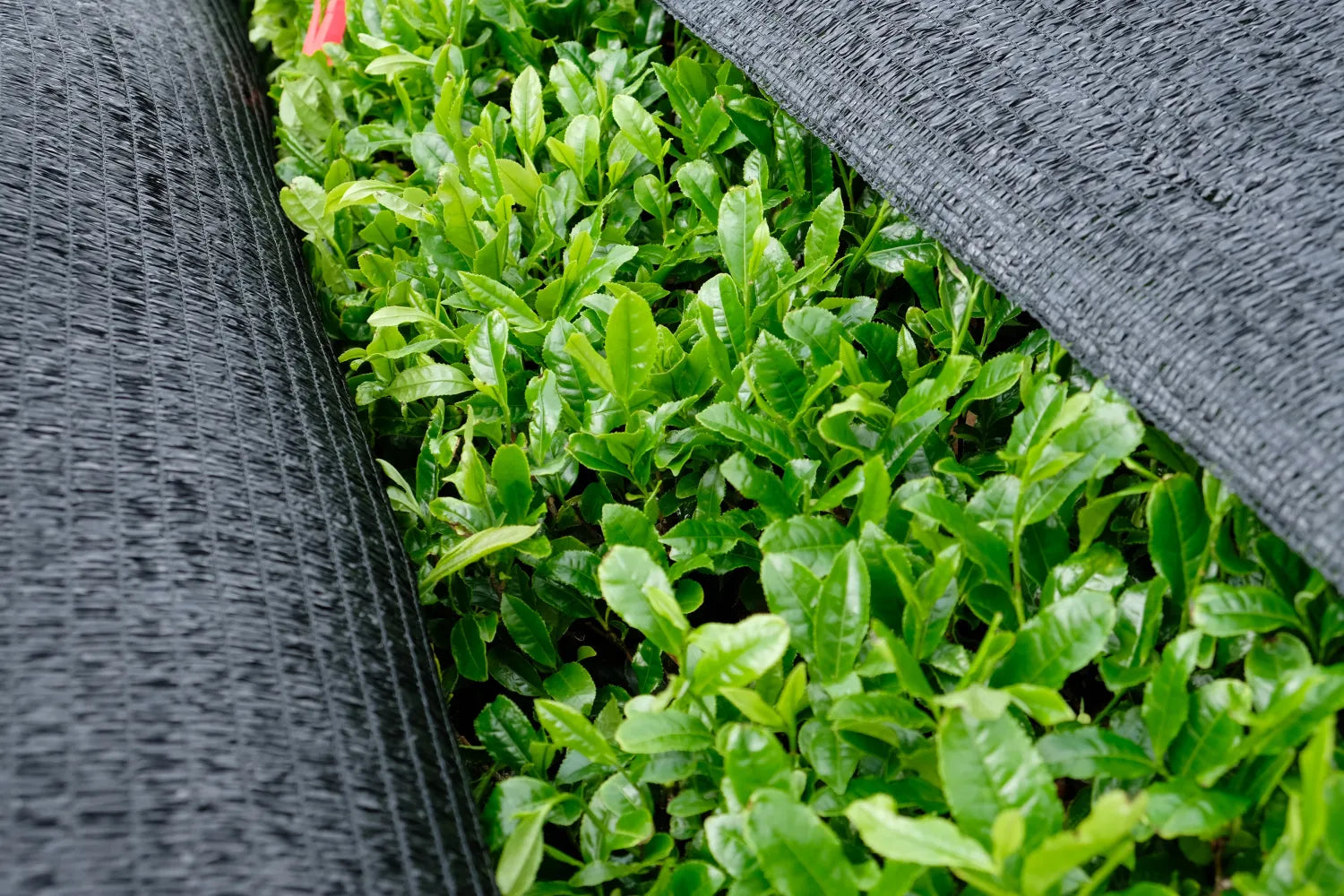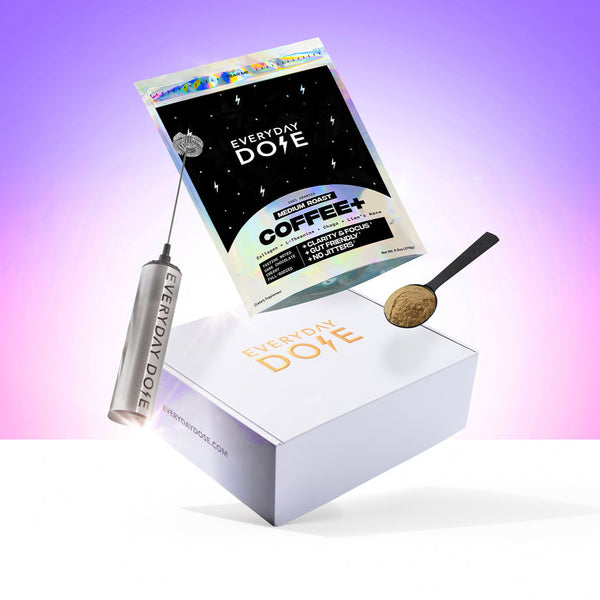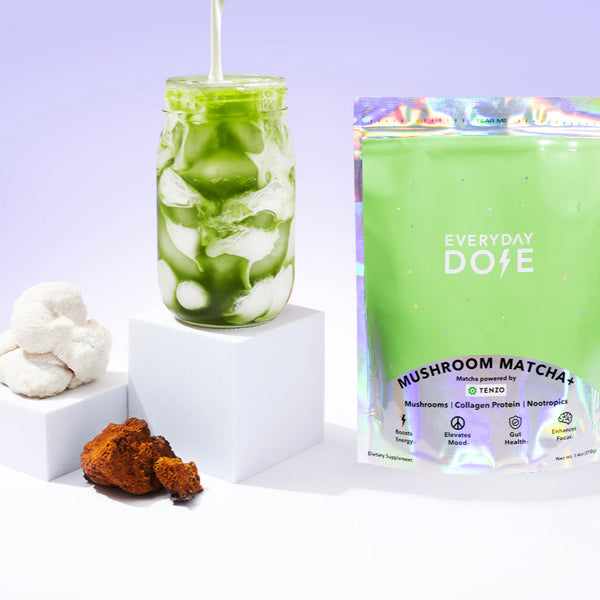All About the Matcha Plant + How Matcha Is Produced

When you go to your local cafe and order an iced matcha latte, it’s easy to grab your drink and go about your day without thinking too much about what’s in it and where its ingredients came from. However, knowing about the origins of your favorite tea is just one more way you can enjoy it even more (as if the fantastic flavor wasn’t enough!).
Matcha is far more than just a packaged powder you buy at the grocery store. It’s a plant that grows in the mountains, a rich part of Japanese culture, and a host to incredible health benefits. Read on to learn everything you need to know about the matcha plant and how it turns into the matcha you know and love.
What Is Matcha?
Matcha is a type of green tea made from the leaves of the Camellia sinensis plant, which is the same plant used for all true teas like oolong, white, and black tea. What sets matcha apart from regular green tea, though, is how it’s prepared. Instead of brewing the leaves, matcha involves grinding them into a fine powder, which is whisked into hot water.
Matcha has been cherished in China and Japan for centuries, especially in Japanese tea ceremonies. Traditionally, this Japanese green tea was consumed as a way to slow down and meditate on the world around us. Now, it’s enjoyed globally for its health benefits and bright green color.
How Is Matcha Made?
So, matcha comes from the same tea tree as black and green tea — so what sets matcha apart from other types of tea? Read on to learn more about the differences in how matcha is grown, processed, and enjoyed.
Cultivation
To start the matcha production process, tea plants are grown under shade for a few weeks before harvest. By restricting their access to direct sunlight, growers can boost the chlorophyll content in the leaves. This is what gives matcha its distinct green color and many of its health benefits.
The shade also increases the levels of L-theanine, the amino acid behind matcha’s smooth, slightly sweet flavor profile. However, it’s not just the growing practices that set matcha plants apart.
Many matcha plants are actually unique cultivars of the tea plant, such as samidori, okumidori, and yabukita. Even among these cultivars, what sets high-quality matcha about is the specific climate. Matcha grown in the cold, such as the plants grown in the Kyoto, Uji growing region, is known for its exceptionally sweet and umami flavor.
Harvesting
The tea leaves used to make matcha are carefully hand-harvested to make sure only the youngest, most tender leaves are selected. These leaves are chosen because they contain the highest levels of antioxidants, caffeine, and L-theanine.
Typically, only the top leaves of the tea plant are harvested, and they are processed immediately to preserve freshness and quality. Matcha is harvested in the early spring during the first of four tea harvests to make sure the green tea leaves are not too bitter.
Processing
After the leaves are harvested, they undergo a de-stemming and deveining process to leave behind only pure tea leaves. Then, they go through a steaming process that prevents oxidation.
This step preserves the leaves' vibrant green color and helps maintain their nutritional content. The steamed leaves are then dried carefully to prevent any loss of flavor or nutrients.
This drying process is key, as it ensures the leaves stay fresh until they are ground into matcha powder. If the drying process is not done properly, it can lead to a loss of flavor and quality in the final product. After this step, the tea leaves are officially tencha, or un-ground matcha tea.
Grinding
Once dried, the tencha is ground into a fine powder. Traditional stone mills are used for this process to ensure the powder retains its delicate flavors and nutritional value. The grinding process is slow and precise, and it can take several hours to produce a small amount of matcha.
This is because high temperatures generated during fast grinding can degrade the flavor and nutritional content, so it’s important to go slowly. The final product is the smooth, vibrant matcha green tea powder we all know and love.
Preparation
Traditional matcha preparation involves whisking the powdered tea into hot water using a bamboo whisk, which is known as a chasen. The process creates a smooth, frothy beverage with a rich flavor.
To make traditional matcha, add one to two teaspoons of matcha powder into a bowl, pour in hot water (heat it to about 175°F), and whisk quickly in a zigzag motion until it’s frothy.
You don’t have to enjoy it the traditional way, though — you can also use matcha to make drinks like lattes, smoothies, and even desserts. If convenience is key for you, you can also swap the traditional bamboo whisk for an electric milk frother.
What Are the Health Benefits of Matcha?
Matcha is packed with antioxidants, especially catechins, which can help combat free radicals and protect the body from oxidative stress. One of the most powerful antioxidants in green tea is EGCG (epigallocatechin gallate), which can do everything from support weight loss to encourage heart health.
Matcha is also known for its ability to support energy and concentration without the jitters often associated with coffee, thanks to its natural combination of caffeine and L-theanine. In fact, drinking matcha regularly can promote a sense of calm alertness, support your metabolism, and encourage immune function. Really, is there anything matcha can’t do?
How To Select the Highest Quality of Matcha
When you’re looking for the best matcha, it's important to consider the grade and source.
Ceremonial-grade matcha is of the highest quality, known for having the brightest green color and delicate flavor. This matcha is so high-quality that it can be enjoyed plain with hot water. Culinary-grade matcha is still a super high-quality tea, but it’s generally better suited for baking, smoothies, or cooking, as its flavor isn’t as good on its own.
The freshness of matcha is also key — look for matcha that is bright green, as this usually means it has a higher chlorophyll content and more fresh. Of course, make sure you also know where your matcha was grown. Japanese matcha is superior in almost every sense, although it’s also usually more expensive.
At Everyday Dose, we use only ceremonial-grade matcha to make our Mushroom Matcha+ blends. We don’t stop there, though — our matcha also undergoes a proprietary cold-extraction process to make sure the resulting tea is low in acidity and caffeine while still having plenty of the good stuff.
The Bottom Line
Matcha green tea is everyone’s favorite drink because of its bright color and delicious flavor. However, it’s the origins of matcha that truly make it one of our favorite forms of tea. This tea comes from the Camellia sinensis plant, but it’s set apart from other types of tea because of its unique cultivation and processing practices.
At Everyday Dose, we know that there’s high quality, and then there’s the best quality. We use nothing but the best of everything so that you can feel good about every sip of our mushroom matcha. Our blend includes not only fresh, ceremonial-grade matcha, but also lion’s mane and chaga mushrooms, collagen protein, and extra L-theanine. Try our mushroom blends today to taste the Everyday Dose difference!
Sources:
Effect of Green Tea Phytochemicals on Mood and Cognition | PubMed
The Evolution of the Tea Ceremony | Japan Society
Japanese Tea Growing Regions | Global Japanese Tea Association
Start your day
The Right Way








